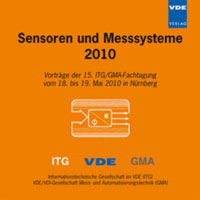Real Time Ethernet in Data Acquisition Systems
Conference: Sensoren und Messsysteme 2010 - 15. ITG/GMA-Fachtagung
05/18/2010 - 05/19/2010 at Nürnberg
Proceedings: Sensoren und Messsysteme 2010
Pages: 6Language: englishTyp: PDF
Personal VDE Members are entitled to a 10% discount on this title
Authors:
Doran, Hans Dermot (Institute of Embedded Systems, Zurich University of Applied Sciences, Winterthur, Switzerland)
Abstract:
Generally high-bandwidth systems use Gigabit Ethernet to transfer bulk data from measurement node to measurement node or from measurement node to a central server. Gigabit technology is much more expensive in both footprint and direct costs and hence not so prevalent as an integrated interface in modern microcontrollers. This makes it less suitable for embedded systems. Fast Ethernet, that is 100MBit/s Ethernet, is in contrast very much available but does require bandwidth scheduling for maximum efficiency. With cheap connectivity distributed instrumentation and monitoring becomes feasible. In instrumentation and monitoring applications mission critical signals such as triggers and alarms must have guaranteed delivery whilst large quantities of measured data must be efficiently traffic transferred across the network. These two requirements, deterministic data transfer and bulk communication, also require some form of bandwidth management. We evaluate various Real Time Ethernet protocols for suitability in instrumentation applications and show results from a prototype PROFINET IRT implementation including bandwidth utilisation of ca. 84%. Using advance features of PROFINET this can be increased to around 90%. We also show how inter-node synchronisation to about 40ns over 20 nodes can be achieved thus making the system useful for distributed data acquisition with high synchronisation between samples.


